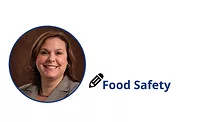How to Make Your Employees Care about Food Safety
You can’t.
There are certainly still those managers who think they can tell their people what to do, what to think and what to care about—then ‘Prest-o, Change-o!’—some magic happens, and everyone on the production floor is committed to moving high quality products out the door.
Occasionally, it will even appear that the pronouncements from the C-suite actually have an impact.
“Food safety is job one!”
But much like that ‘magic’ show you caught during your meetings in Vegas, it is an illusion that will be glittery, short-lived, and will never hold up to scrutiny under the light of day.
Engagement
If you pay any attention to business management theory these days, you cannot escape the concept of Employee Engagement.
Kevin Kruse, on Forbes.com,[1] provides a typical definition:
“Employee engagement is the emotional commitment an employee has to the organization and its goals, resulting in the use of discretionary effort.”
Years ago, we just called it morale.
The point is that engaged employees are emotionally invested in the whole firm—they believe in what they are doing and are dedicated to their peers, their supervisors and the company. The mission of the company provides them with purpose. They are loyal to the people and the brand.
When done right, engagement is a powerful cocktail, and the power is contained within the concept of discretionary effort.
Discretionary Effort
Most of us have financial commitments that we must pay every month—mortgage, car, utilities and groceries—those non-discretionary expenses that we must pay to maintain our household. The remaining money that we decide to spend on things like entertainment, club memberships, hobbies—these represent our discretionary spending.
In the same way, we all have discretionary effort that we can choose to ‘invest’ in our work. Much like our household budget, we all have a baseline effort that we must provide to meet the basic requirements of our job. But you can think of many situations in which you chose to (or, indeed, chose not to) go above and beyond what was required to simply get your job done.
It might include volunteering for an ad hoc committee, teaching a new hire or showing a supervisor where quality issues consistently creep up. These things aren’t required of an individual to ‘do their job,’ but when people consistently go beyond the baseline requirements good things happen for the company.
And, it turns out, having engaged individuals who are willing to contribute their discretionary effort brings about a raft of good things. According to the Journal of Applied Psychology (business-unit-level relationship between employee satisfaction, employee engagement and business outcomes: A meta-analysis),[2] increased levels of employee engagement correlate with higher profit, productivity and customer satisfaction while decreasing absenteeism, turnover, and accidents.
Creating Engagement
The steps necessary to create employee engagement, and thus capture the many associated benefits, has been the subject of numerous articles, books and posts. You can find many excellent resources with a web browser and a couple of minutes.
However, if you are looking for the silver bullet, the one sure-fire way to create positive engagement in your staff, start with the mirror.
Jim Clifton, chairman and CEO of the Gallup Organization, has been studying these issues for years, and in his words, “…lousy managers, not lousy benefits, create miserable workplaces. And lousy managers tend to create lousy, miserable employees.”[3]
So, back to the issue—how to make your employees care about food safety.
You can’t make them.
You can guide them. You can create an environment in which everyone from the CEO to the receptionist cares about food safety. You can make it clear in both the stated and the unstated company values that food safety comes before all else—including short-term revenues and share price. You can be honest and transparent and concerned more with people than with income statements.
Mr. Clifton says it best, “Solutions come when employers understand that the art of supervising and managing in the new millennium is closer to being a coach than to being a boss.”
Geoff Schaadt, M.Sc., MBA, is a consultant with Delta Partners.
References
1. www.forbes.com/sites/kevinkruse/2012/09/04/why-employee-engagement/.
2. psycnet.apa.org/index.cfm?fa=buy.optionToBuy&id=2002-12397-006.
3. thechairmansblog.gallup.com/2012/03/what-makes-workplaces-miserable.html.
>
Looking for quick answers on food safety topics?
Try Ask FSM, our new smart AI search tool.
Ask FSM →







